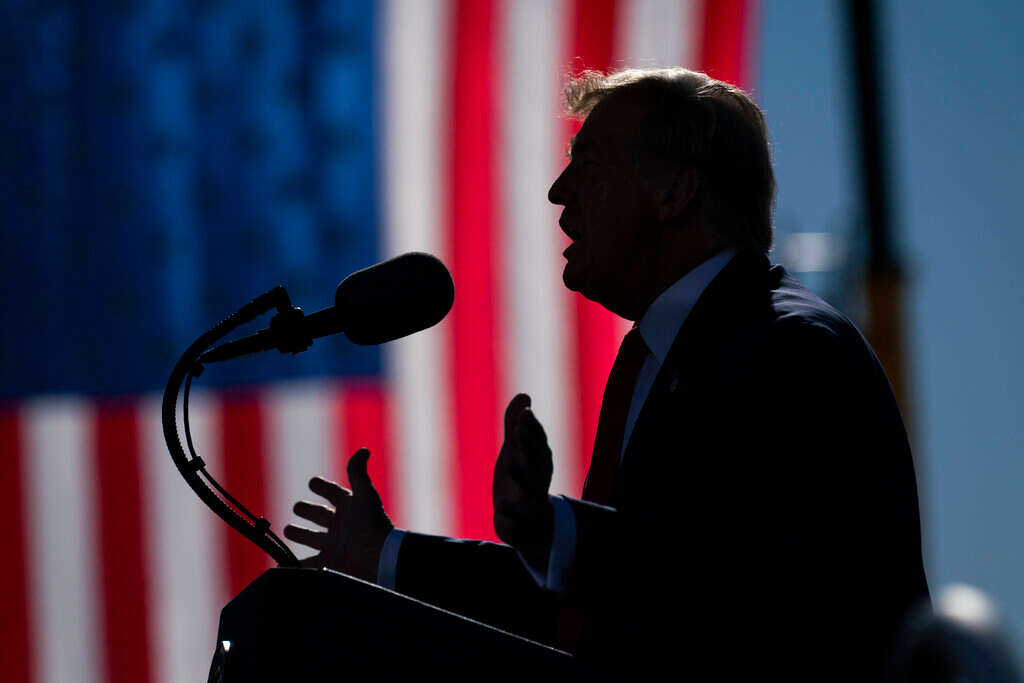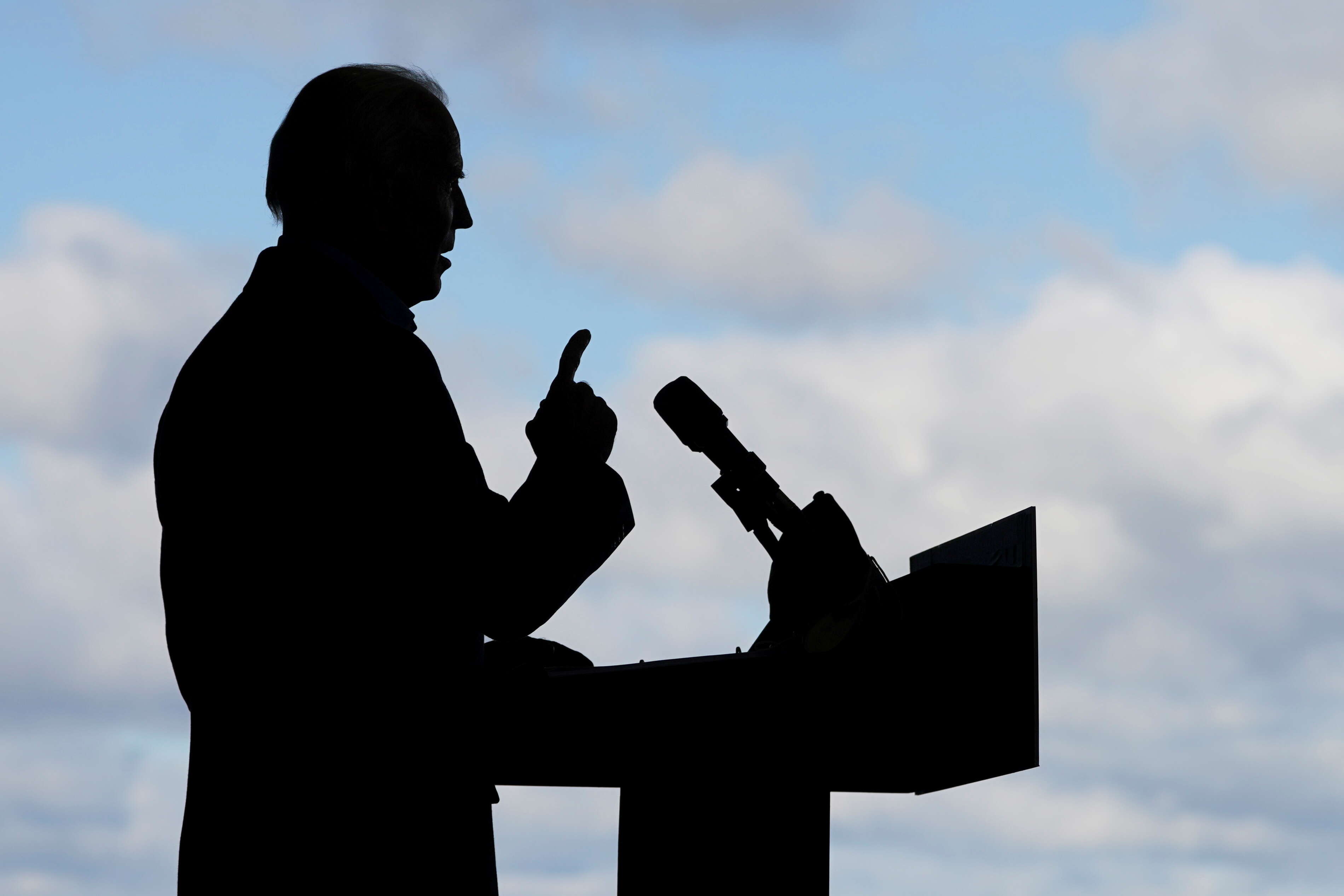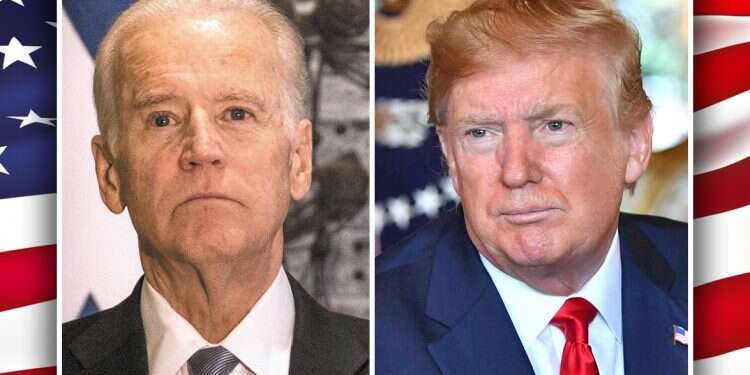The 2020 presidential election season now nearing its end has certainly been one of the most dramatic in the history of the United States. One can hardly recall an election that felt so fateful, with such an abundance of historically momentous events. These included the demonstrations and riots following the murder of George Floyd, the death of liberal Supreme Court Justice Ruth Bader Ginsberg and her replacement with conservative Justice Amy Coney Barrett – a development that completely changed the ideological balance on the US Supreme Court – and the historical voter turnout even before Election Day.
Although the actual voting process began weeks ago, with a record number of early ballots cast, both President Donald Trump and his Democratic rival former Vice President Joe Biden know that Tuesday will be one of the most important days in American history. Trump could not have received better news on the day before the election than the soaring stock markets, which will allow the president to continue presenting himself as "Mr. Economy."
Follow Israel Hayom on Facebook and Twitter
The Democratic Party, by contrast, is conducting a legal battle against what they define as "voter suppression." In Texas, a federal court discussed whether 127,000 ballots in Houston, Texas, a Democratic stronghold, should be counted – votes the Republicans claim were cast illegally.
But above all else, the current election is about the pandemic that has spread throughout the US and the entire world and has repeatedly taken center stage. This year will enter the history books as the year of COVID-19, and the 2020 US election will be remembered as the COVID campaign.

The first patient in the US was diagnosed on January 20th, less than two weeks before the first vote in the Democratic primaries. For a few weeks, it seemed this was perhaps a transient episode, a crisis that would not endure.
Trump launched his campaign enjoying the advantage of being the incumbent president and with the aura of a candidate unbeatable by the Democrats; in this position, he at first did all that was in his power to downplay the seriousness of the pandemic. Two weeks later, with the virus spreading like wildfire, even the White House could no longer deny the country was in the midst of a raging pandemic, and the president was forced to declare a national state of emergency.
While the entire country entered combat mode, former Vice President Biden took the lead on the internal Democratic front and was safely on his way to win the primaries. Biden saw COVID as an opportunity to gain momentum over Trump, yet was also forced to completely change his campaign to comply with the new regulations. Finding himself at age 77 deep in a high-risk group, the former vice president was obliged to cancel nearly all of his public events. When he did venture outside to meet the public, he wore a mask that covered his face, which became a regular target of Trump's mockery. The Democratic candidate vigorously attacked the government's conduct while attempting to remain cool, calm, and collected during a crisis. "Trump keeps saying that he's a wartime president. Well, start to act like one," demanded Biden, adding: "I, along with every American, hope he steps up."
While the candidates and the American public, in general, were still trying to understand how to deal with the pandemic, another traumatic event cast its shadow over the American scene – the killing of Minneapolis resident George Floyd by police. The video in which a police officer could be seen kneeling on Floyd's neck while he was begging for his life until he was finally rendered unconscious went viral, with online rage spilling over into the streets.
Demonstrations broke out in dozens of cities throughout the country, in some cases becoming violent and including incidents of looting. At the height of the protests, demonstrations were held in at least 75 cities, with nighttime curfews imposed in 25. Faced with another major outbreak of racial tensions in American society, Trump hoped to turn the crisis in his favor, declaring himself the "president of law and order" while threatening to deploy the US Army to quell the riots.
However, the president's attacks only caused further mayhem and outrage, especially when police fired tear gas and rubber bullets on peaceful protesters outside the White House with the sole aim of allowing Trump to walk over to the nearby church for a photo-op holding a bible in his hand.
Biden voiced his support for the protesters while rejecting the call made by some to defund the police. "We're in the battle for the soul of this nation," he declared. "I won't traffic in fear and division. I won't fan the flames of hate. I will seek to heal the racial wounds that have long plagued this country – not use them for political gain."

The coronavirus pandemic and the widespread protests could fill at least five eventful campaigns. However, 2020 has not been a typical election year, with an array of dramatic issues demanding the public's attention: the death of iconic Supreme Court Justice Ruth Bader Ginsburg and her replacement with conservative Justice Amy Coney Barrett – a step that may have changed the character of the US Supreme Court for generations; the signing of peace accords between Israel and the Gulf states; historical forest fires in the Western US, and much more.
Between one stormy event and another, the election year has also included more "routine" milestones. A flood of polls again inundated the American media, both right- and left-wing, repeatedly handing a significant and stable lead to Biden. Trump and his staff attempted to cast doubt on the credibility of the polls and the media, while the Democrats wanted to believe the pollsters but recalled how they had misled everyone in 2016. The contest also included the traditional presidential debates, yet, in the best 2020 style, they were anything but traditional.
The first televised debate will hardly be remembered as a constructive discussion; it was more like a battlefield, with the two candidates repeatedly attacking each other and neither able to complete a single sentence.
The second debate was supposed to take place two weeks later. Then, a few days after the first one, the president was diagnosed with COVID. Trump was hospitalized and, after receiving a series of experimental treatments and aggressive medication, recovered within ten days. At least that was what his doctors said.
The president returned to the campaign trail but refused to meet Biden for the second debate since the Democrats insisted on a virtual encounter in light of Trump's medical condition. The debate was eventually held in late October and this time was more civilized. However, a definite winner could not be called – a fact that ostensibly played in Biden's favor, with his lead in the polls remaining unharmed.
With the election season reaching the final stretch, it became clear that the voting process would also be anything but typical. Despite repeated – and unsubstantiated – warnings on Trump's part that mail-in voting was rife with fraud, millions of Americans chose to send in their votes, rather than arriving physically at polling stations.
Millions of others came to voting stations that opened for early voting. As of the beginning of this week, more than 90 million Americans had already cast their votes – 58 million by mail and 33 million at early voting stations. These numbers are equal to about 65% of the entire vote in the 2016 elections – a historical record. Election experts estimate that the total number of voters may reach 150 million, which would be an all-time record, representing the highest turnout since 1908.
The general estimate is that the Democrats are leading significantly in the early vote, whether by mail or at the polling stations and that Republicans are expected to try to close the gap on Election Day. The question that remains is which side will more successfully exploit the sense of urgency among the voter public, translating it to victory in the fight for the White House.
Subscribe to Israel Hayom's daily newsletter and never miss our top stories!




